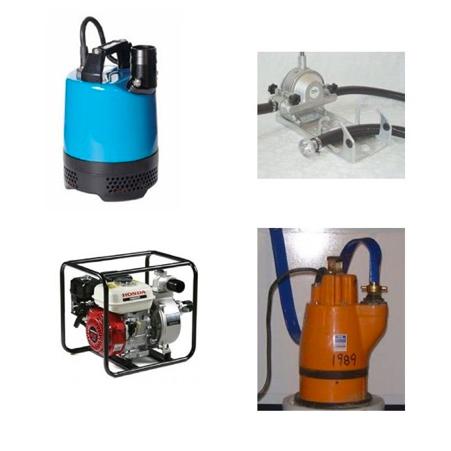Categories
- Access Platform Hire
- Access Tower & Support
- Breaking & Drilling
- Cleaning & Floorcare
- Concrete & Compaction Equipment
- Cutting & Grinding
- Decorating & Site Equipment
- Dehumidifiers, Drying and Flood Restoration Equipment
- Diggers/ Dumpers/Trenchers
- Dust & Fume Extractors
- Flooring & Surface Preparation Equipment Hire
- Gardening and Landscaping
- Heaters
- Hilti Hire
- Lifting, pulling
- Lighting/Power/Welding
- Pumps & Plumbing
- Sanders & Saws
- Full range
- Plant Sales
- Plant Hire
-
Powered Access Hire Locations
- Powered Access Hire Hinckley
- Powered Access Hire Wellingborough
- Powered Access Hire Rugby
- Powered Access Hire Leicester
- Powered Access Hire Coventry
- Powered Access Hire Northampton
- Powered Access Hire Solihull
- Powered Access Hire Redditch
- Powered Access Hire Market Harborough
- Powered Access Hire Birmingham
- Powered Access Hire Dudley
- Powered Access Hire Walsall
- Powered Access Hire Wolverhampton
- Powered Access Hire Peterborough
- Powered Access Hire Blaby
- Powered Access Hire Corby
- Powered Access Hire Leamington Spa
- Powered Access Hire Broughton Astley
- Powered Access Hire Exhall
- Powered Access Hire Rushden
- Powered Access Hire Wigston
- Powered Access Hire Bedworth
- Powered Access Hire Oadby
- Powered Access Hire Kenilworth
- Powered Access Hire Desborough
- Powered Access Hire Knowle
- Powered Access Hire Atherstone
- Powered Access Hire Enderby
- Powered Access Hire Southam
- Powered Access Hire Daventry
- Powered Access Hire Warwick
- Powered Access Hire Kettering
- Powered Access Hire Stratford-upon-Avon
- Powered Access Hire Lutterworth
- Powered Access Hire Nuneaton
- Powered Access Hire Irthlingborough
- Powered Access Hire Alcester
- Powered Access Hire Thrapston
- Powered Access Hire Coleshill
- Powered Access Hire Balsall Common
- Powered Access Hire Earls Barton
- Powered Access Hire Towcester
- Powered Access Hire Raunds
- Powered Access Hire Ibstock
- Powered Access Hire Studley
- Powered Access Hire Shipston on Stour
-
Access Tower & Support Hire Locations
- Access Tower & Support Hire Hinckley
- Access Tower & Support Hire Wellingborough
- Access Tower & Support Hire Rugby
- Access Tower & Support Hire Leicester
- Access Tower & Support Hire Coventry
- Access Tower & Support Hire Northampton
- Access Tower & Support Hire Solihull
- Access Tower & Support Hire Redditch
- Access Tower & Support Hire Market Harborough
- Access Tower & Support Hire Birmingham
- Access Tower & Support Hire Dudley
- Access Tower & Support Hire Walsall
- Access Tower & Support Hire Wolverhampton
- Access Tower & Support Hire Peterborough
- Access Tower & Support Hire Blaby
- Access Tower & Support Hire Corby
-
Plant Hire Locations
-
Concrete Crusher Hire Locations
- Concrete Crusher Hire Daventry
- Concrete Crusher Hire Warwick
- Concrete Crusher Hire Kettering
- Concrete Crusher Hire Stratford upon Avon
- Concrete Crusher Hire Lutterworth
- Concrete Crusher Hire Birmingham
- Concrete Crusher Hire Dudley
- Concrete Crusher Hire Walsall
- Concrete Crusher Hire Wolverhampton
- Concrete Crusher Hire Peterborough
- Concrete Crusher Hire Blaby
- Concrete Crusher Hire Corby
- Concrete Crusher Hire Leamington Spa
- Concrete Crusher Hire Broughton Astley
- Concrete Crusher Hire Exhall
- Concrete Crusher Hire Leicester
- Concrete Crusher Hire Coventry
- Concrete Crusher Hire Northampton
- Concrete Crusher Hire Solihull
- Concrete Crusher Hire Rugby
- Concrete Crusher Hire Hinckley
- Concrete Crusher Hire Redditch
- Concrete Crusher Hire Wellingborough
- Concrete Crusher Hire Market Harborough
- Concrete Crusher Hire Rushden
- Concrete Crusher Hire Wigston
- Concrete Crusher Hire Bedworth
- Concrete Crusher Hire Oadby
- Concrete Crusher Hire Kenilworth
- Concrete Crusher Hire Desborough
- Concrete Crusher Hire Knowle
- Concrete Crusher Hire Atherstone
- Concrete Crusher Hire Irthlingborough
- Concrete Crusher Hire Balsall Common
- Concrete Crusher Hire Enderby
- Concrete Crusher Hire Southam
- Concrete Crusher Hire Alcester
- Concrete Crusher Hire Thrapston
- Concrete Crusher Hire Coleshill
- Concrete Crusher Hire Earls Barton
- Concrete Crusher Hire Towcester
- Concrete Crusher Hire Raunds
- Concrete Crusher Hire Ibstock
- Concrete Crusher Hire Studley
- Concrete Crusher Hire Shipston on Stour
- Concrete Crusher Hire Meriden
- Concrete Crusher Hire Crick
- Concrete Crusher Hire Attleborough
- Concrete Crusher Hire Wollaston
- Concrete Crusher Hire Staverton
- Concrete Crusher Hire Lowick
- Concrete Crusher Hire West Bromwich
- Concrete Crusher Hire Loughborough
- Concrete Crusher Hire Stourbridge
- Concrete Crusher Hire Halesowen
- Concrete Crusher Hire Smethwick
- Concrete Crusher Hire Willenhall
- Concrete Crusher Hire Kingswinford
- Concrete Crusher Hire Swadlincote
- Concrete Crusher Hire Tipton
- Concrete Crusher Hire Wednesbury
- Concrete Crusher Hire Coalville
- Concrete Crusher Hire Rowley Regis
- Concrete Crusher Hire Brierley Hill
- Concrete Crusher Hire Melton Mowbray
- Concrete Crusher Hire Oldbury
- Concrete Crusher Hire Stamford
- Concrete Crusher Hire Brackley
- Concrete Crusher Hire Shepshed
- Concrete Crusher Hire Birstall
- Concrete Crusher Hire Wombourne
- Concrete Crusher Hire Oakham
- Concrete Crusher Hire Castle Donington
- Concrete Crusher Hire Oundle
- Concrete Crusher Hire Kegworth
- Concrete Crusher Hire Silverstone
-
Mini Digger Hire Locations
- Mini Digger Hire Hinckley
- Mini Digger Hire Wellingborough
- Mini Digger Hire Rugby
- Mini Digger Hire Coventry
- Mini Digger Hire Northampton
- Mini Digger Hire Leicester
- Mini Digger Hire Solihull
- Mini Digger Hire Market Harborough
- Mini Digger Hire Redditch
- Mini Digger Hire Birmingham
- Mini Digger Hire Peterborough
- Mini Digger Hire Walsall
- Mini Digger Hire Wolverhampton
- Mini Digger Hire Dudley
- Mini Digger Hire Leamington Spa
- Mini Digger Hire Broughton Astley
- Mini Digger Hire Exhall
- Mini Digger Hire Blaby
- Mini Digger Hire Corby
- Mini Digger Hire Coalville
- Mini Digger Hire Swadlincote
- Mini Digger Hire Loughborough
- Mini Digger Hire Rushden
- Mini Digger Hire Bedworth
- Mini Digger Hire Wigston
- Mini Digger Hire Oadby
- Mini Digger Hire Kenilworth
- Mini Digger Hire Irthlingborough
- Mini Digger Hire Atherstone
- Mini Digger Hire Desborough
- Mini Digger Hire Alcester
- Mini Digger Hire Thrapston
- Mini Digger Hire Crick
- Mini Digger Hire Earls Barton
- Mini Digger Hire Enderby
- Mini Digger Hire Balsall Common
- Mini Digger Hire Knowle
- Mini Digger Hire Southam
- Mini Digger Hire Meriden
- Mini Digger Hire Coleshill
- Mini Digger Hire Daventry
- Mini Digger Hire Warwick
- Mini Digger Hire Kettering
- Mini Digger Hire Stratford-upon-Avon
- Mini Digger Hire Lutterworth
- Mini Digger Hire Nuneaton
-
Dumper Hire Locations
- Dumper Hire Hinckley
- Dumper Hire Nuneaton
- Dumper Hire Warwick
- Dumper Hire Lutterworth
- Dumper Hire Daventry
- Dumper Hire Kettering
- Dumper Hire Stratford-Upon-Avon
- Dumper Hire Coventry
- Dumper Hire Dudley
- Dumper Hire Leicester
- Dumper Hire Market Harborough
- Dumper Hire Northampton
- Dumper Hire Peterborough
- Dumper Hire Redditch
- Dumper Hire Rugby
- Dumper Hire Solihull
- Dumper Hire Walsall
- Dumper Hire Wellingborough
- Dumper Hire Wolverhampton
- Dumper Hire Blaby
- Dumper Hire Broughton Astley
- Dumper Hire Corby
- Dumper Hire Exhall
- Dumper Hire Leamington Spa
- Dumper Hire Alcester
- Dumper Hire Atherstone
- Dumper Hire Balsall Common
- Dumper Hire Bedworth
- Dumper Hire Burton Latimer
- Dumper Hire Coleshill
- Dumper Hire Crick
- Dumper Hire Desborough
- Dumper Hire Earls Barton
- Dumper Hire Enderby
- Dumper Hire Irthlingborough
- Dumper Hire Kenilworth
- Dumper Hire Knowle
- Dumper Hire Meriden
- Dumper Hire Oadby
- Dumper Hire Rushden
- Dumper Hire Southam
- Dumper Hire Thrapston
- Dumper Hire Wigston
- Dumper Hire Attleborough
- Dumper Hire Ibstock
- Dumper Hire Lowick
- Dumper Hire Raunds
- Dumper Hire Shipston on Stour
- Dumper Hire Staverton
- Dumper Hire Studley
- Dumper Hire Towcester
- Dumper Hire Wollaston
- Dumper Hire Coalville
- Dumper Hire Halesowen
- Dumper Hire Kingswinford
- Dumper Hire Loughborough
- Dumper Hire Rowley Regis
- Dumper Hire Smethwick
- Dumper Hire Stourbridge
- Dumper Hire Swadlincote
- Dumper Hire Tipton
- Dumper Hire Wednesbury
- Dumper Hire West Bromwich
- Dumper Hire Willenhall
- Dumper Hire Birmingham
-
Concrete Crusher Hire Locations
Submersible pumps: How and when to use them
Submersible pumps are a powerful, flexible form of tool that can be used to drain both liquids (including sludge, sewage and water), as well as certain solids from an area. There are, however, a range of different formats, and choosing correctly for the right situation is not only important for efficiency, but for safety. Here’s a complete guide to helping you choose how and when to use a Submersible pump, and which form of pump you should be using.

Submersible pump types
Guide Rail Mounted
This form of pump is used where permanent pumping is required; it is set up upon a guide rail mounting.
Free standing/portable units
Whilst there are permanent Submersible pumps for particular uses, for DIY and building purposes free standing/portable units are ideal. They are free from permanent guide rails and can be installed for temporary use.
Flexible-drive pump
These pumps are especially popular in Australia at the moment. This submersible flexible-drive Pump is powered by a flexible shaft drive unit. There's no better way to drain footings before the concrete goes in. Flexible drive pumps are perfect for a variety of jobs in agricultural and construction applications and can be used for footings, manholes, tanks, drainage, pool excavations and waste transfer and more.
Puddle Pumps
Puddle pumps are great for getting rid of those very last bits of water residue and can pump down to as low as just 1mm depth. Great for drainage and flood damage.
Benefits of using diesel or petrol driven Submersible pumps
Petrol or diesel submersible pumps can provide for a collection of advantages, including:
- No need for electricity;
- No motor, which means that this form of pump is incredibly low maintenance;
- A format that provides TFE 2" or 3" Output, accepting a standard hose;
- No need for priming, no sparks as would be encountered with electricity and no smell;
- Superior reliability, with this pump ideal for being left unattended for long periods of time.
When to use a Submersible pump
Submersible pumps are incredibly flexible in relation to the projects that they may be used within, covering all manner of slurry, drainage and sewerage pumping needs. As a hire company, the most common of projects that our clients use Submersible pumps for the draining of foundations, creating the optimal environment and an area prepped for the pouring of concrete.
How to use a Submersible pump
- Choose the outfall area
Start by choosing where you will pump the liquid to, this could be a drain pipe, sewage system or a grassy verge. - Connect the hose up to the pump
Follow this by plugging in the extension cord, which should then be connected to your power source. - Begin by pumping from the lowest point of the water-filled area
You should also double check that your filter screen is in place to ensure that any debris is caught, rather than clogging up the machine. - Run the pump into the deepest part of the water
You should then turn the system on and wait for the pump to begin draining the area, be sure to remove any debris that is collected by the screen as it pumps. As the water level falls, be sure to reposition the hose to the deepest area of the water.
Our pro tips
To help you get the most out of your Submersible pump hire here are our top tips:
- Pour a cup of water into the pump before you begin pumping. This will help to prime the pump and help the machine to fire up.
- Never allow your pump to run dry, keeping an eye on the decreasing water levels. As you begin to reach the end of the pumping you should turn the pump off and mop up any remaining liquids instead (this can help avoid any potential damage).























































































































































































































 Full range
Full range Plant Sales
Plant Sales Plant Hire
Plant Hire Careers at Plantool
Careers at Plantool


 Follow us @hirecentres
Follow us @hirecentres







